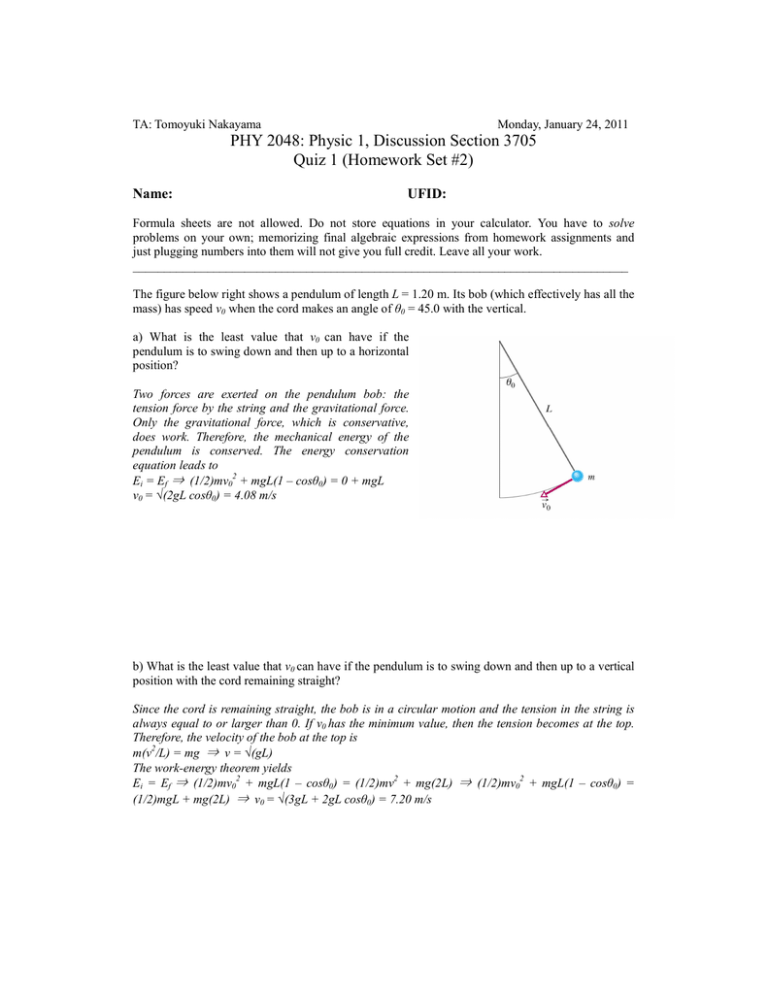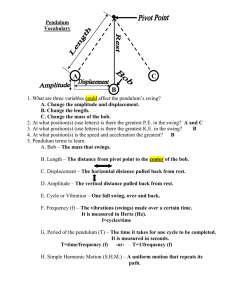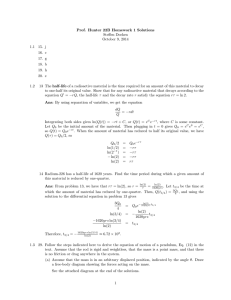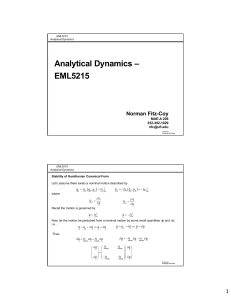PHY 2048: Physic 1, Discussion Section 3705 Quiz 1 (Homework
advertisement

TA: Tomoyuki Nakayama Monday, January 24, 2011 PHY 2048: Physic 1, Discussion Section 3705 Quiz 1 (Homework Set #2) Name: UFID: Formula sheets are not allowed. Do not store equations in your calculator. You have to solve problems on your own; memorizing final algebraic expressions from homework assignments and just plugging numbers into them will not give you full credit. Leave all your work. ________________________________________________________________________________ The figure below right shows a pendulum of length L = 1.20 m. Its bob (which effectively has all the mass) has speed v0 when the cord makes an angle of θ0 = 45.0 with the vertical. a) What is the least value that v0 can have if the pendulum is to swing down and then up to a horizontal position? Two forces are exerted on the pendulum bob: the tension force by the string and the gravitational force. Only the gravitational force, which is conservative, does work. Therefore, the mechanical energy of the pendulum is conserved. The energy conservation equation leads to Ei = Ef ⇒ (1/2)mv02 + mgL(1 – cosθ0) = 0 + mgL v0 = √(2gL cosθ0) = 4.08 m/s b) What is the least value that v0 can have if the pendulum is to swing down and then up to a vertical position with the cord remaining straight? Since the cord is remaining straight, the bob is in a circular motion and the tension in the string is always equal to or larger than 0. If v0 has the minimum value, then the tension becomes at the top. Therefore, the velocity of the bob at the top is m(v2/L) = mg ⇒ v = √(gL) The work-energy theorem yields Ei = Ef ⇒ (1/2)mv02 + mgL(1 – cosθ0) = (1/2)mv2 + mg(2L) ⇒ (1/2)mv02 + mgL(1 – cosθ0) = (1/2)mgL + mg(2L) ⇒ v0 = √(3gL + 2gL cosθ0) = 7.20 m/s




